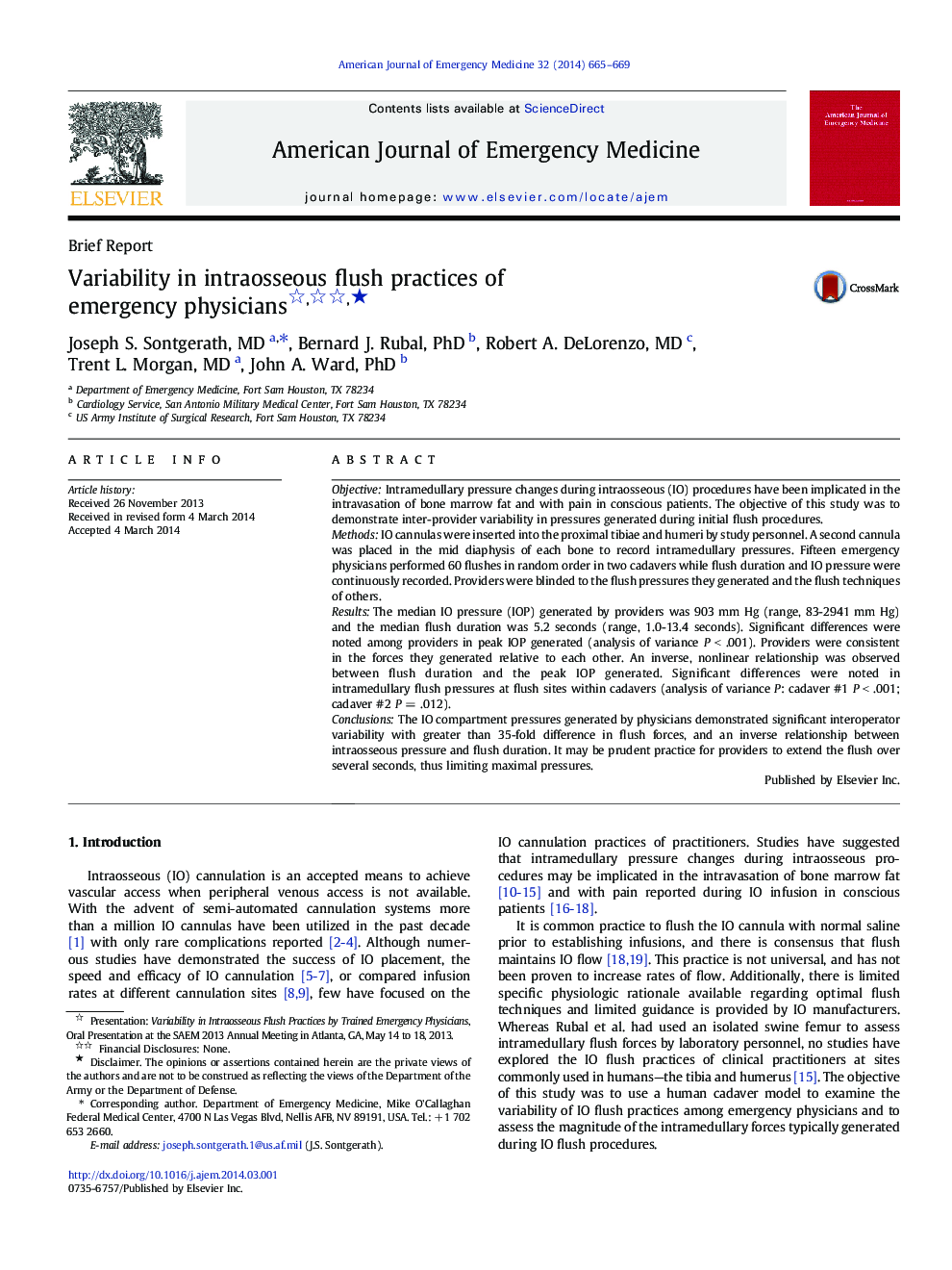| Article ID | Journal | Published Year | Pages | File Type |
|---|---|---|---|---|
| 3225069 | The American Journal of Emergency Medicine | 2014 | 5 Pages |
ObjectiveIntramedullary pressure changes during intraosseous (IO) procedures have been implicated in the intravasation of bone marrow fat and with pain in conscious patients. The objective of this study was to demonstrate inter-provider variability in pressures generated during initial flush procedures.MethodsIO cannulas were inserted into the proximal tibiae and humeri by study personnel. A second cannula was placed in the mid diaphysis of each bone to record intramedullary pressures. Fifteen emergency physicians performed 60 flushes in random order in two cadavers while flush duration and IO pressure were continuously recorded. Providers were blinded to the flush pressures they generated and the flush techniques of others.ResultsThe median IO pressure (IOP) generated by providers was 903 mm Hg (range, 83-2941 mm Hg) and the median flush duration was 5.2 seconds (range, 1.0-13.4 seconds). Significant differences were noted among providers in peak IOP generated (analysis of variance P < .001). Providers were consistent in the forces they generated relative to each other. An inverse, nonlinear relationship was observed between flush duration and the peak IOP generated. Significant differences were noted in intramedullary flush pressures at flush sites within cadavers (analysis of variance P: cadaver #1 P < .001; cadaver #2 P = .012).ConclusionsThe IO compartment pressures generated by physicians demonstrated significant interoperator variability with greater than 35-fold difference in flush forces, and an inverse relationship between intraosseous pressure and flush duration. It may be prudent practice for providers to extend the flush over several seconds, thus limiting maximal pressures.
